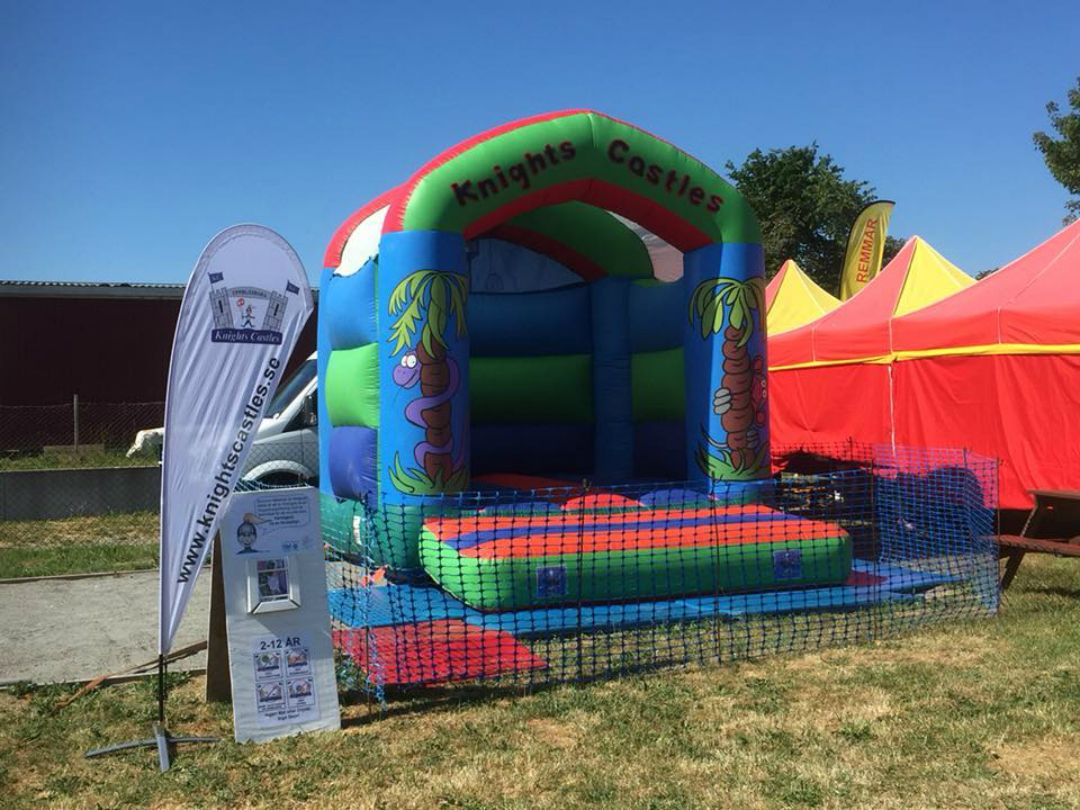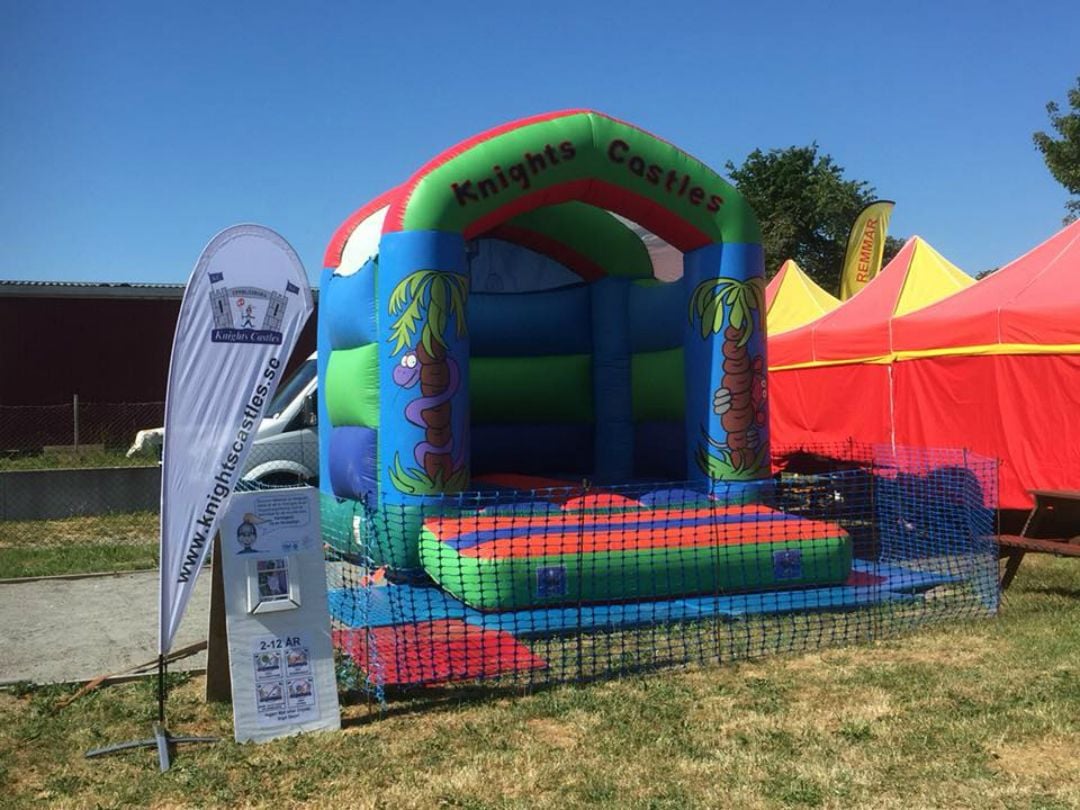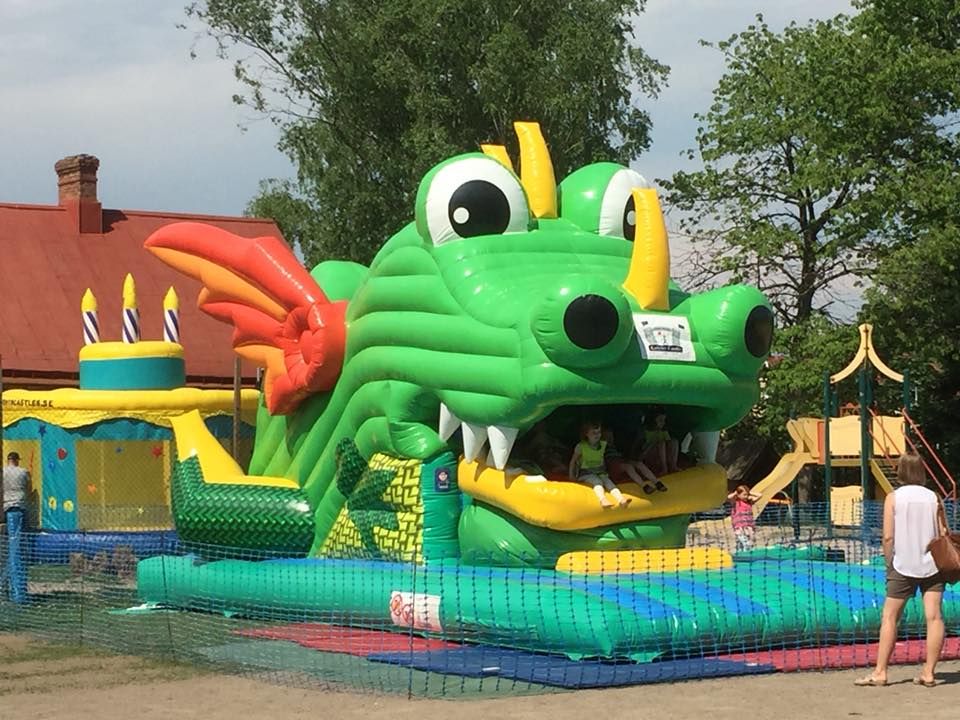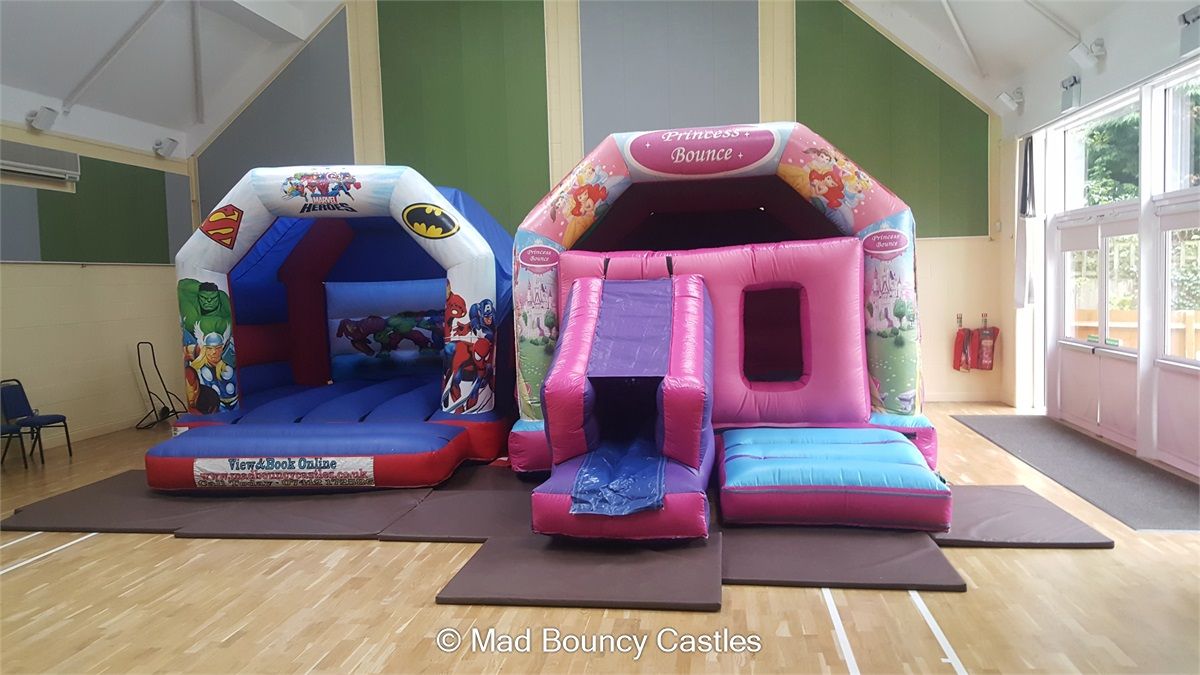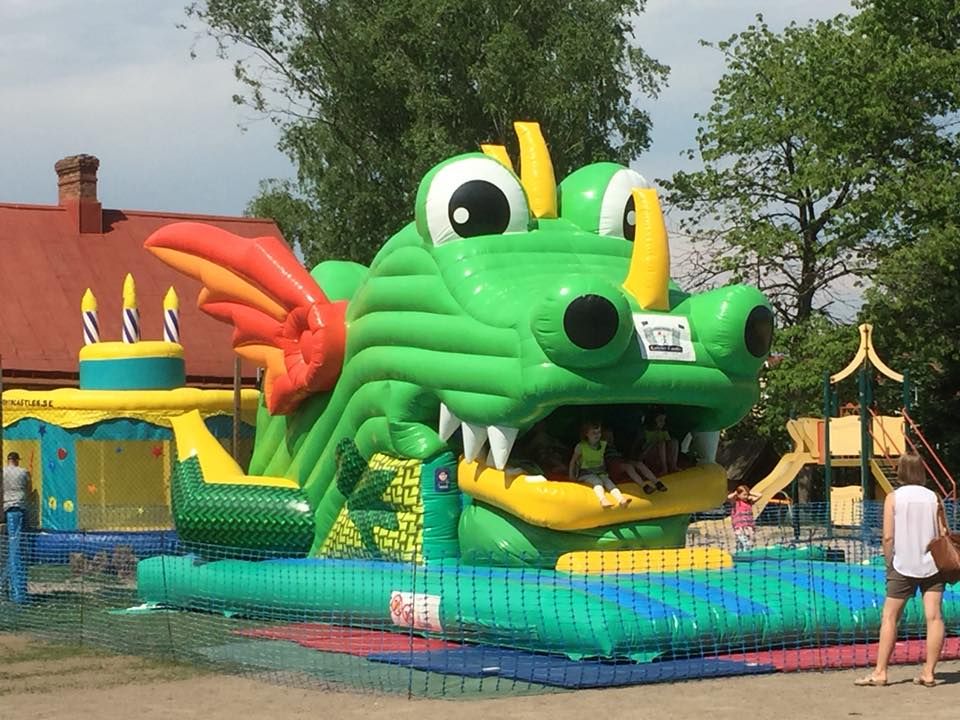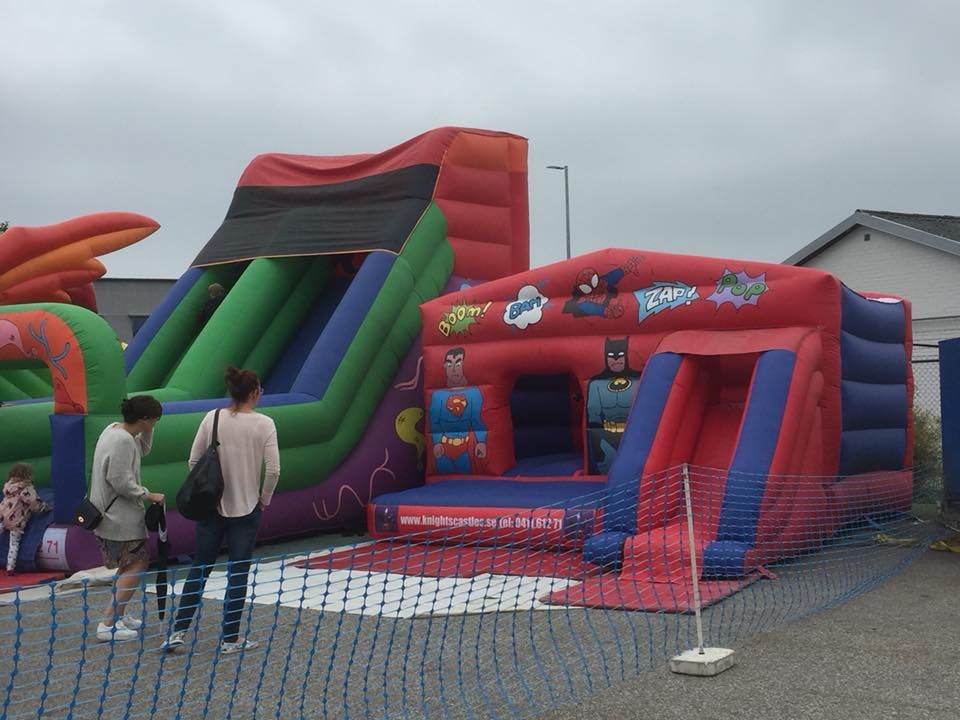General Instructions
Safe handling.
Inflatables can be very heavy and require some care in their handling if injuries are not to be caused. The first requirement for safe handling is that the inflatable was folded and rolled properly after its last use. A good, hard roll, flat at both ends, is so much more easily handled than a floppy heap of PVC. It can be handled and moved on a 2-wheeled sack barrow and easily bowled over onto a truck or trailer. Do not try to lift a complete inflatable. Lift only one end at a time. When the rolled inflatable is lying down, take up a squat position, lean a shoulder into the end and push with the legs. Your leg muscles are the strongest you have and will lift the inflatable onto its end. It can then be easily moved using the sack barrow. When loading the inflatable onto a truck or trailer, stand it up on its end close to the truck or trailer, lean the top onto the edge of the platform and then lift the bottom end and bowl it over.
Tips on rolling up A castle.
Setting up on grass.
Choose your site. The site must be big enough to accommodate the equipment, bearing in mind the open space needed at front and sides and the length of the blow-tube. The site must be level or have a slope of not more than 5 degrees in any direction. The inflatable must be sited well away from possible hazards such as overhead power lines or other obstacles with hazardous projections (e.g. fences and/or trees). The site must be cleared of debris and sharp objects on, or embedded in, the surface.
How to anchor it down temporarily when windy.
If ropes form part of the anchorage system, attach them to the anchor-points. The windward side of the inflatable needs to be anchored temporarily while it is inflating so drive anchor-stakes into the ground on the windward side and loosely tie on the windward side ropes. Using industry standard 38cm long x minimum 16mm diameter stakes, there is little risk of penetrating underground services. However, you should check that there are no obvious signs of excavation for cable runs, pipes etc. and check with the client for the location of any underground services before driving the stakes in. The wind-speed must be no more than Force 5 on the Beaufort scale(maximum 10.5 m/s /38 km/h)
Inflating
Make sure onlookers keep away. Ensure all electrical equipment is suitable for outdoor use. Check that you have the correct size and type of blower and attach it securely to the blow-tube. Tie up any other tubes and close any zips. Switch on the blower and allow the inflatable to inflate fully. Watch the temporary anchorages you have connected in case they are positioned wrongly and pull tight. If they do pull tight, switch off the blower quickly and re-position either the inflatable or the stake, or loosen the rope. When the inflatable is fully inflated, you can push or pull it into its correct position.
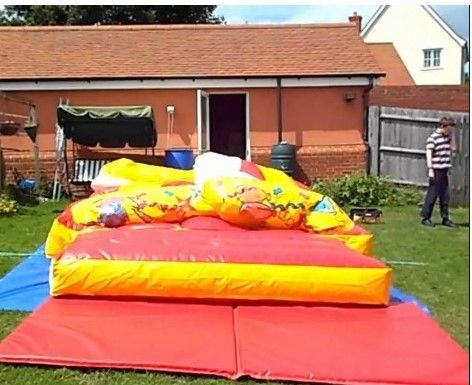
Anchor it down permanently.
You must use every anchorage point on the inflatable because their number and positioning has been calculated for each inflatable. Drive an anchor-stake into the ground for each remaining anchorage point and securely connect the ropes or webbings. The original temporary anchorages might want moving so as to be in the correct position. The stakes need to be positioned so that the ropes or webbings go upwards from the stake towards the inflatable at between 30 and 45 degrees. Moving the stake closer makes the angle bigger. Moving it away makes the angle smaller. The stakes should be driven into the ground slightly inclined away from the inflatable and the ropes or webbings should not be pulled too tight. They should curve gently up to the inflatable so as to allow movement of the inflatable up and down when in use. The stakes should protrude no more than 25mm above the ground. If the inflatable requires anchorages in the impact area, make sure the stakes are as close in to the base of the inflatable as possible. With the slide its important to anchor the side ropes hanging down.
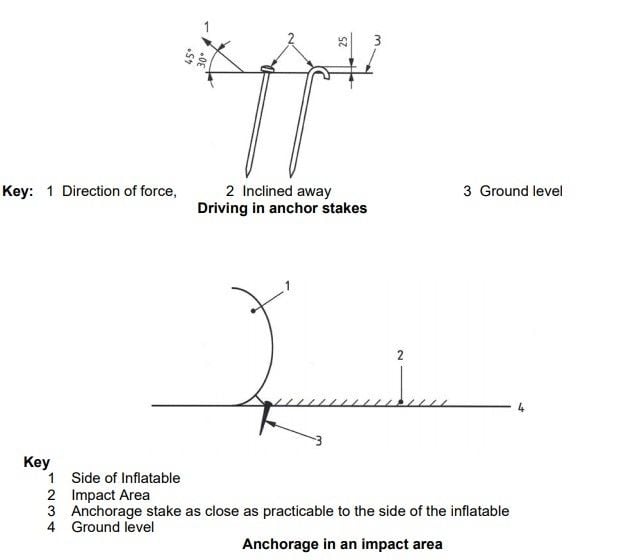
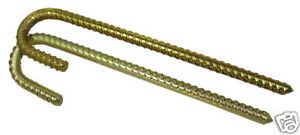
Adjust the position of the blower.
The blower needs to be moved as far away from the inflatable as the blow-tube will allow and then moved forward 50mm so as to leave a little free play between blower and inflatable so that the blower is not pulled when people are bouncing. Note: The blower must stand at least 1.2m away from the inflatable. Make sure the tube is not twisted (left pic) and the blower is not fallen over.(right pic)
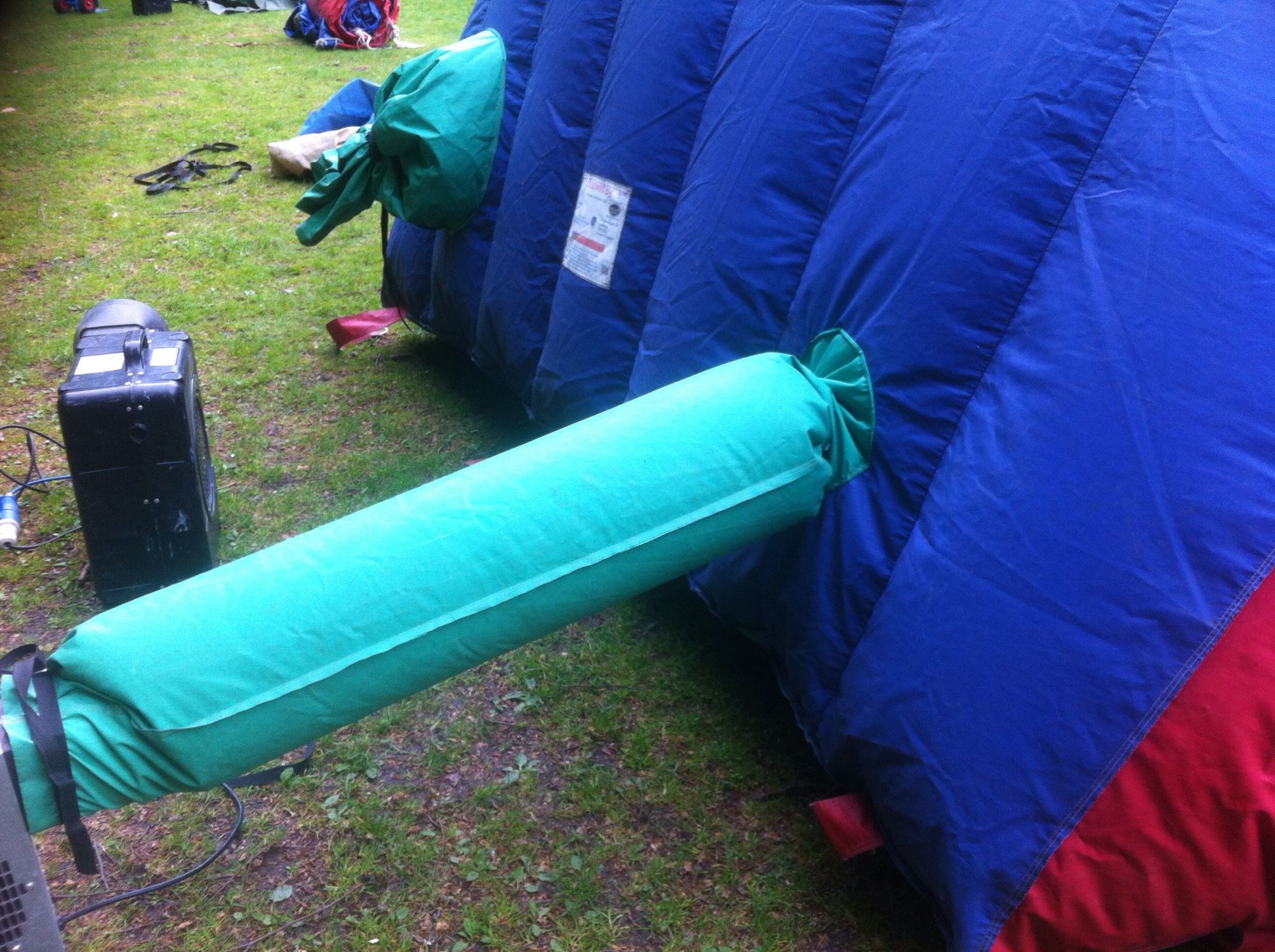
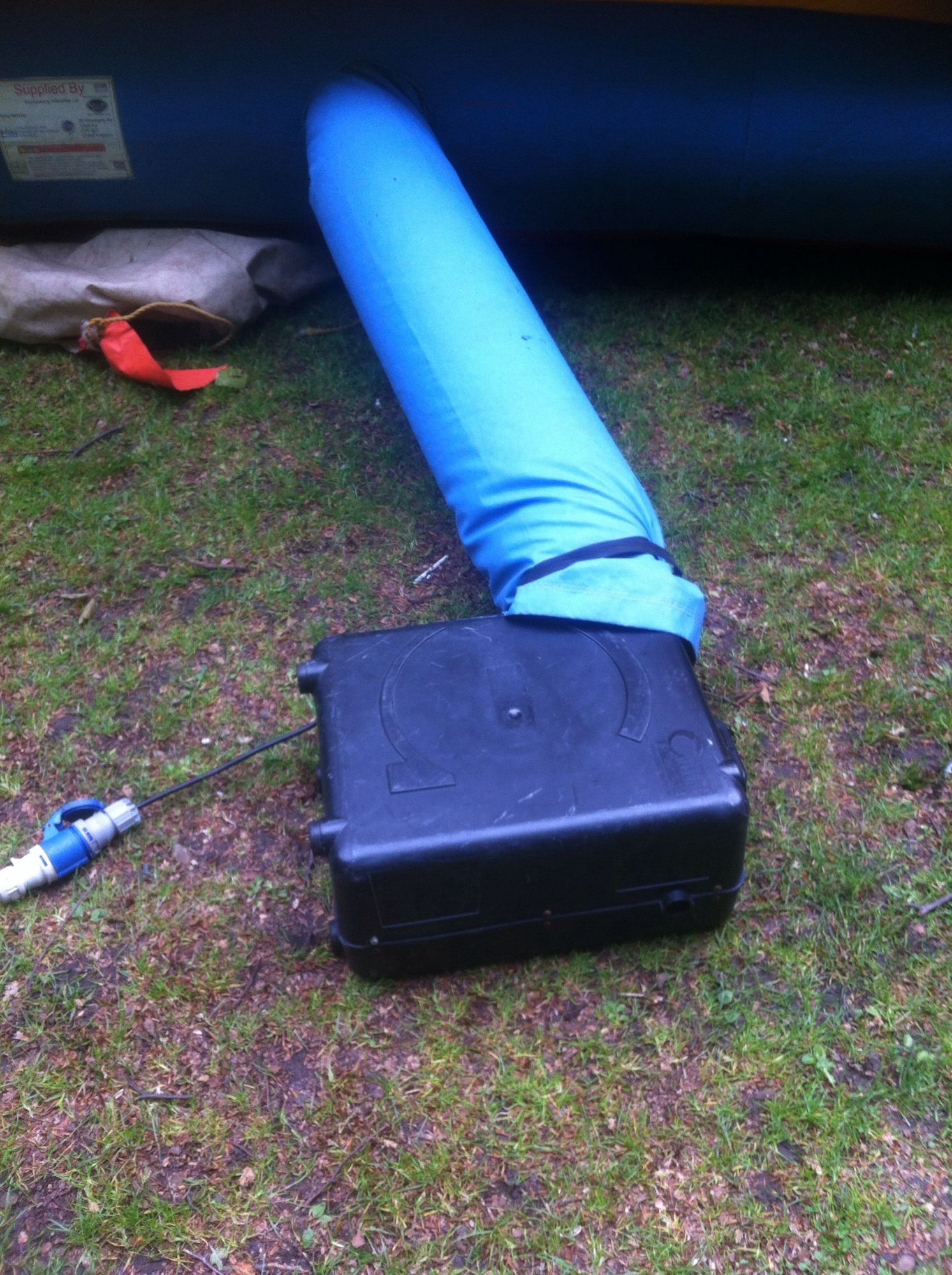
Do you need mats at the entrance?
If the grass or earth is soft and not abrasive, it may not be necessary to use landing mats all around the entrance/exit, because soft grass and earth have sufficient impact attenuating properties for the maximum allowed fall-off height of inflatables (60cm). However, if the grass or earth are hard and abrasive, you will need to install landing mats over the whole of the impact area.
Setting up on hard floor outside.
Anchoring On hard standing, you will be unable to anchor with stakes driven into the ground. Each anchorpoint must be attached to something which will withstand a force of 160kg. This could be weights or sandbags, vehicles, provided they are immobilised and under your control, or fittings already in the ground. If you are near the edge of hard standing, you can sometimes anchor the rear and one side of the inflatable with stakes into the ground beyond the hard standing, leaving only one side to be anchored in the ways suggested above. Use a firm standing tree or even a car or trailer if needed.
Use mats
On hard standing you will definitely need landing mats, covering the whole of the impact area, and you will need to be on your guard against them moving when the session is in progress.
Protect the base.
If the hard standing is abrasive, you must use a groundsheet under the inflatable so as not to wear out the base of the inflatable. If the floor is not abrasive, there will be no need to use a groundsheet under the inflatable.

Setting up indoors.
ls the site suitable? You must check that there is enough floor-space on which the inflatable can stand with its blowtube fully extended and that there is plenty of space (3.5m) where the users get on and off. The height of the ceiling must be sufficient to allow the inflatable to inflate fully without touching and high enough to prevent users from touching the ceiling or any other fittings such as lights. If there is some doubt about the height, stand by the blower when inflating so that you are ready to switch off quickly if any part of the inflatable is too tall.
Does the inflatable need anchoring? Much depends upon the size and weight of the inflatable and the size of user. The inflatable will not blow away when indoors, but it could move across the floor and it could overturn. An inflatable with a small base and high side-walls is particularly prone to overturn if there are tall users and they make a concerted effort to run from side to side throwing themselves against the walls. This type of action on any small inflatable will at least cause the inflatable to move sideways thus putting the blower out of position and threatening to pull the blow-tube off of the blower. This tendency can be combated by the use of weights tied to the anchor-points, or by attaching the anchor-points to gym bars or any other secure fittings. Sideways movement can be counteracted by placing rubber mats under the inflatable.
You will definitely need to use landing mats to cover the whole of the impact area and be wary of them moving while the equipment is in use.
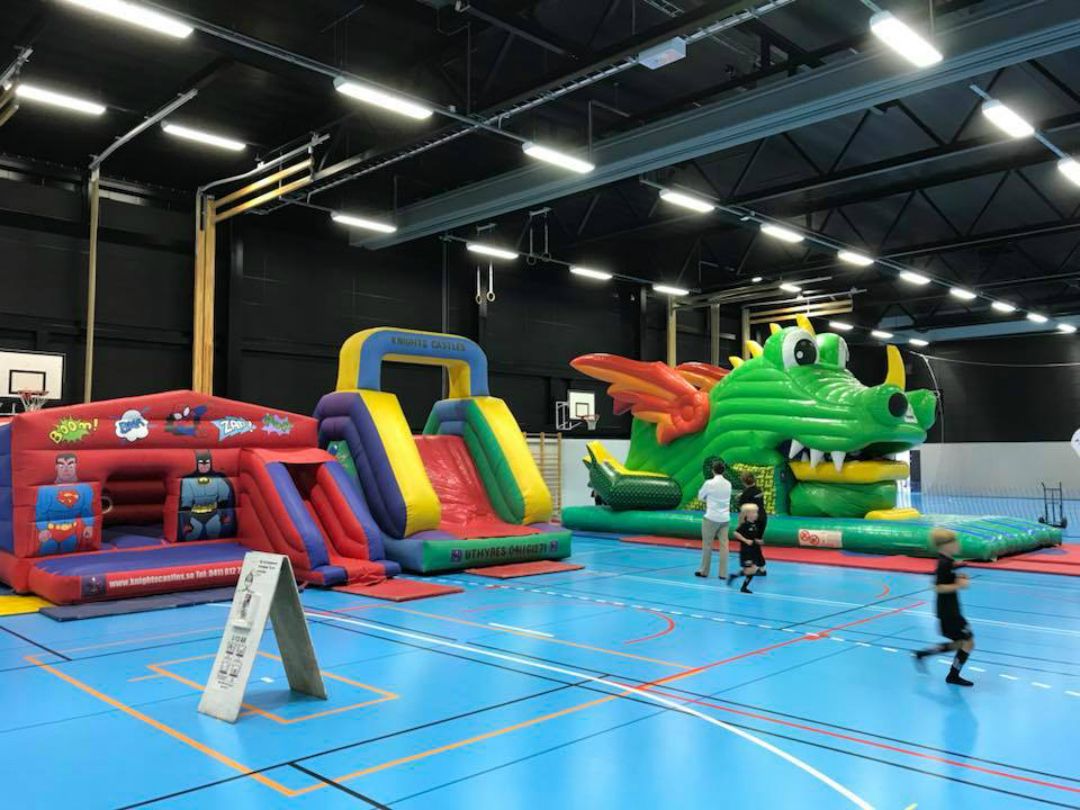
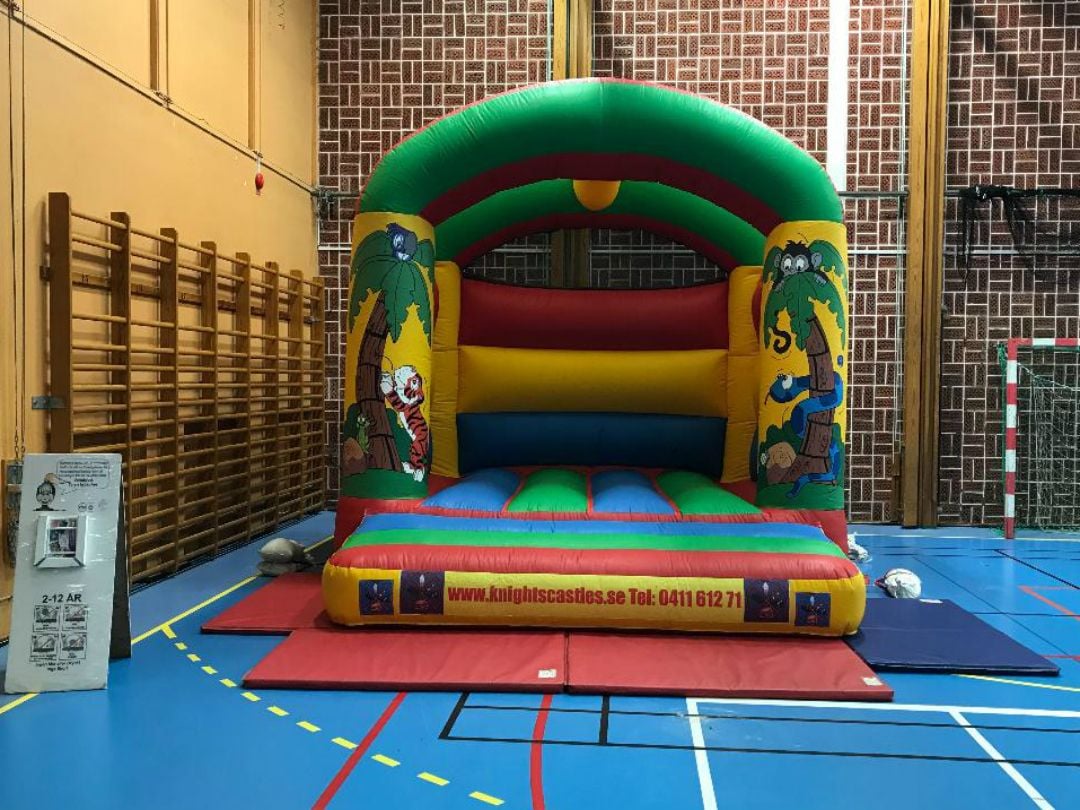
Where is the impact area?
The impact area has been mentioned several times previously. It is the area of ground immediately next to any open side of the inflatable and it extends to 1.2m away. For instance, on an ordinary castle with 3 walled sides and one open side with a full width step, it is the area, shaped like a U, all around the step. Here are a few common examples:
Check-list for operators and attendants.
1) Exercise constant supervision
2) Admit users in a controlled and safe manner
3) Restrict the maximum height of user
4) Restrict the maximum number of users
5) Separate users into groups of approximately the same height
6) Get users to remove shoes, necklaces, gum, bags, purses and anything hard or sharp
7) Ask spectacle wearers if they can manage without - if not, warn the other users
8) Keep the surrounding area clear
9) Stop users from playing on the step
10) Stop users from playing too roughly
11) Stop users from trying to somersault
12) Stop users from climbing or hanging on containing walls
13) Close down the operation when re-fuelling a generater.
At all times remember the golden rule – Do not leave a working inflatable unattended.

